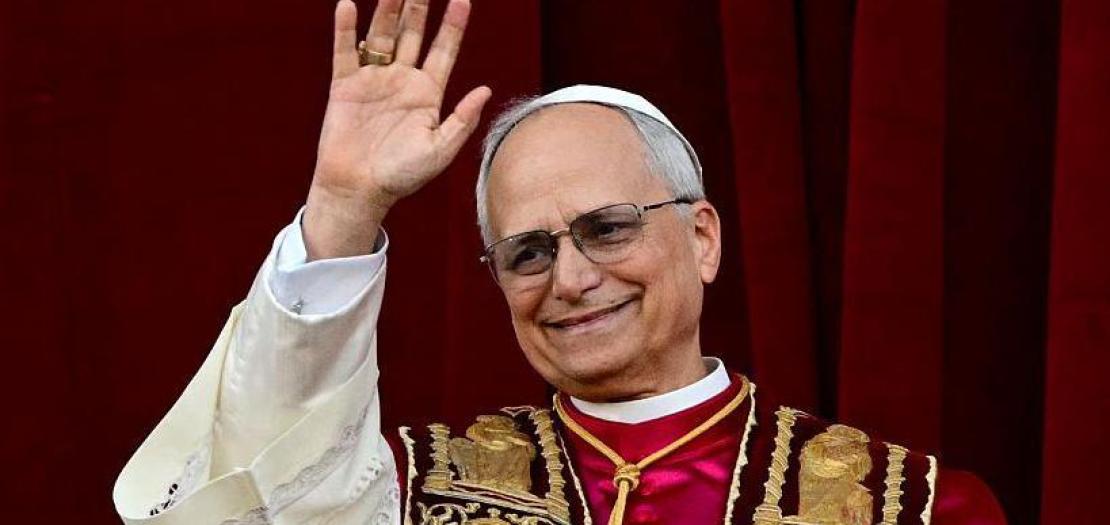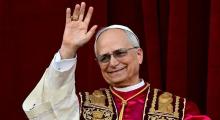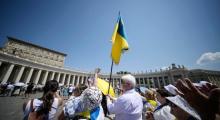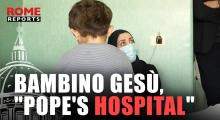Issued by the Catholic Center for Studies and Media - Jordan. Editor-in-chief Fr. Rif'at Bader - موقع أبونا abouna.org

The world is “wounded by continuous wars,” with the independent portal ACLED (Armed Conflict Location and Event Data Project) counting at least 56, from the most heated conflicts, such as Gaza, Ukraine, and Sudan, to lesser-known ones that often involve non-state actors, to the “frozen” wars that remain unresolved but always risk rekindling, as recently occurred with the border dispute between Thailand and Cambodia or the dispute between Pakistan and India over Kashmir.
It is against this backdrop, repeatedly recalled in his appeals, that last Wednesday, at the end of his General Audience, Pope Leo XIV decided to dedicate Friday, August 22—the day in which the Church celebrates the Queenship of the Blessed Virgin Mary—to prayer and fasting for peace.
Specifically, in a post published late this morning on his @Pontifex account on X, the Pope expressed his hope that “hearts may be freed from hatred,” that “we may abandon the logic of division and retaliation, and that a comprehensive vision inspired by the common good may prevail.”
Urgency of Peace
Internationally, virtually all Episcopal Conferences and individual dioceses have responded to Pope Leo’s invitation. Cardinal Matteo Zuppi, the president of the Italian Bishops’ Conference, called for intense prayer for “an unarmed and disarming peace.”
Numerous individual dioceses and religious movements in Italy have also mobilized in response to the Pope’s call. The Diocese of Rome, in a letter from Cardinal Vicar Baldo Reina, who will preside over a Mass this afternoon at the Lateran Basilica, urged “every community, parish, family, and individual believer” to fast as “a sign of our communion and an offering of peace.”
The Spanish Episcopal Conference also announced in a statement that it has accepted the Pope’s invitation, recalling the letter addressed to the bishops on August 8 by its president, Archbishop Luis Argüello, in which he encouraged them to “intensify prayer and attitudes in favour of peace.”
“We ask that this invitation be widely shared among our parish communities, religious congregations, ecclesial movements, and pastoral groups, so that the cry for peace may rise united in the heart of the Church throughout the world,” said Cardinal Jaime Spengler, president of the Latin American and Caribbean Episcopal Council.
Among the special highlights is the support for the appeal of the Apostolic Vicariate of Southern Arabia, whose territory includes Yemen, which has been ravaged by a “forgotten” civil war for over ten years. “Through fasting and prayer, we ask the Virgin Mary, Queen of Peace, to intercede with her Son for peace, especially in the nearby Holy Land, and for the consolation of all those afflicted by this and all conflicts,” declared Apostolic Vicar Paolo Martinelli.
The Custodian of the Holy Land, Father Francesco Ielpo, in a letter addressed to the Franciscan friars, emphasised that “peace is a long-awaited and deeply desired gift, especially in the Holy Land, which is marked by conflict and hope”.
“Let us pray that the international community will not merely stand by and watch, but will intervene to promote peace, respect for international law, and the safety of civilians, humanitarian workers and journalists,” he added.
In Asia, Father Qaisar Feroz, a Capuchin friar and parish priest of Our Lady Queen of Angels Parish in Bhai Pheru, on the outskirts of Lahore, in the Pakistani Punjab, organised a prayer meeting with nuns, adults and children and a fast for peace. In Cambodia, prayers were held in the presence of the Apostolic Vicar of Phnom Penh, Olivier Schmitthaeusler. In Myanmar, devastated by civil war, heartfelt prayers for peace took place among families and small groups of displaced faithful. Throughout the day, small groups of faithful went to St Mary’s Cathedral in Yangon.
A change of perspective is needed
While Pope Leo XIV’s invitation was widely accepted by the Churches, there is still an urgent need for a “change of pace” at the political and diplomatic level. The world is torn apart by a “piecemeal Third World War” that already brought arms spending to a record level of $2.718 trillion last year.
For three and a half years, with Russia’s full-scale invasion of Ukraine in February 2022, Europe has been plunged back into the nightmare of a bloody war that had not been seen in the heart of the continent since the conflicts in the Balkans.
On the fringes of the European continent, on the other hand, progress has been made towards a historic peace agreement between Armenia and Azerbaijan that could put an end to more than 30 years of bloodshed and misunderstanding.
In Gaza, after the brutal attack by Hamas on 7 October 2023, an unprecedented humanitarian tragedy in our century is unfolding before our eyes. Meanwhile, in the West Bank, the Israeli government’s latest plans remind us of the danger of issues that have remained unresolved for too many years.
The same is true of Lebanon, where, after last autumn’s war, the bleakest scenarios seem to have been averted, while neighbouring Syria is going through an important and delicate moment, undergoing momentous changes after the fall of Bashar Al Assad.
Unresolved conflicts on all continents
Africa remains one of the continents with the highest number of conflicts. In Sudan, the power struggle between the army and the Rapid Support Forces (RSF) that flared up in April 2023 has produced what the UN has called the world’s most serious displacement crisis, with 14 million people forced to leave their homes.
But there are many other hotbeds of war on the continent: from the east of the Democratic Republic of Congo, where hundreds of armed groups have been plundering the country’s resources for years, sowing bloodshed and instability, to northern Mozambique and the many countries of the Sahel where jihadist violence rages, to Ethiopia, Somalia and Libya, divided by another “forgotten” war.
There is no shortage of conflicts on the Asian continent either. In Myanmar, for over four years, a brutal conflict has pitted the ruling military junta against rebel groups that now control large parts of the country. The Korean peninsula remains divided and riven by winds of war anchored in the logic of nuclear deterrence, while the border between Pakistan and Afghanistan has long been the scene of a conflict that drags on far from the spotlight.
Oceania is no exception, with tribal violence flaring up from time to time in Papua New Guinea.
Latin America, perhaps less marked by open warfare, nevertheless has many countries where crime and violence still reign, including Haiti, the poorest country in the Americas, where almost 80 per cent of the territory is under the control of criminal gangs, amid the impotence of the government and the international community.
The path of forgiveness to achieve peace
So many conflicts, so many unresolved issues, all united by the suffering they cause among the civilian population, especially the most vulnerable. The world, as Pope Leo XIV pointed out, urgently needs a change of perspective because “without forgiveness there will never be peace.”
“True forgiveness does not wait for repentance, but is offered first,” the Pope explained during last Wednesday’s General Audience in the Paul VI Hall, noting that “forgiving does not mean denying evil, but preventing it from generating more evil.”







